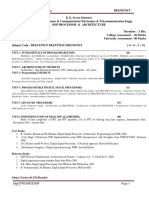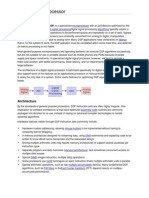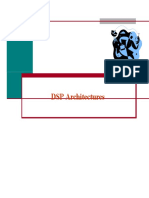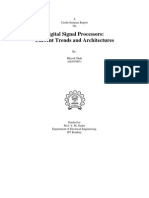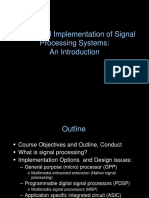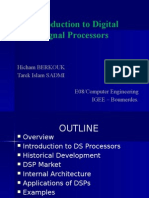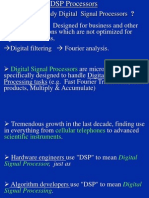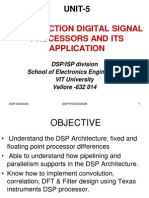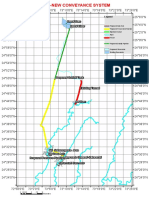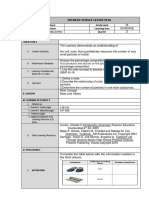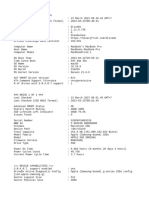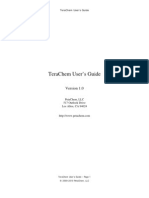0% found this document useful (0 votes)
123 views26 pagesVLSI Architecture & DSP Overview
This document discusses the motivation and basic concepts of VLSI architecture for digital signal processors (DSPs). It explains that general purpose processors are not optimized for signal processing workloads that involve intensive arithmetic operations on continuous data streams with real-time constraints. In contrast, DSPs are designed specifically for such tasks with features like specialized functional units, smaller control logic, and addressing the requirements of common DSP algorithms like convolution through techniques like rotating register files that emulate FIFO buffers in data memory. The document provides an overview of DSP applications, theory, and implementation approaches to motivate the need for domain-specific DSP architectures.
Uploaded by
Vikramjeet MaitraCopyright
© © All Rights Reserved
We take content rights seriously. If you suspect this is your content, claim it here.
Available Formats
Download as PDF, TXT or read online on Scribd
0% found this document useful (0 votes)
123 views26 pagesVLSI Architecture & DSP Overview
This document discusses the motivation and basic concepts of VLSI architecture for digital signal processors (DSPs). It explains that general purpose processors are not optimized for signal processing workloads that involve intensive arithmetic operations on continuous data streams with real-time constraints. In contrast, DSPs are designed specifically for such tasks with features like specialized functional units, smaller control logic, and addressing the requirements of common DSP algorithms like convolution through techniques like rotating register files that emulate FIFO buffers in data memory. The document provides an overview of DSP applications, theory, and implementation approaches to motivate the need for domain-specific DSP architectures.
Uploaded by
Vikramjeet MaitraCopyright
© © All Rights Reserved
We take content rights seriously. If you suspect this is your content, claim it here.
Available Formats
Download as PDF, TXT or read online on Scribd
/ 26
